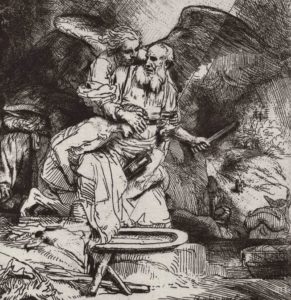Hand carved and painted ornaments are now available in the store. Click here for more details.
Author: Dale
New Woodcarving Illustrated Article
Danielle Schagrin of Woodcarving Illustrated wrote a very nice article, for the winter 2019 issue, covering the Hebrews 11 commission. The magazine is on sale now and available until January 20th, 2020.
We are in Cody, Wyoming!
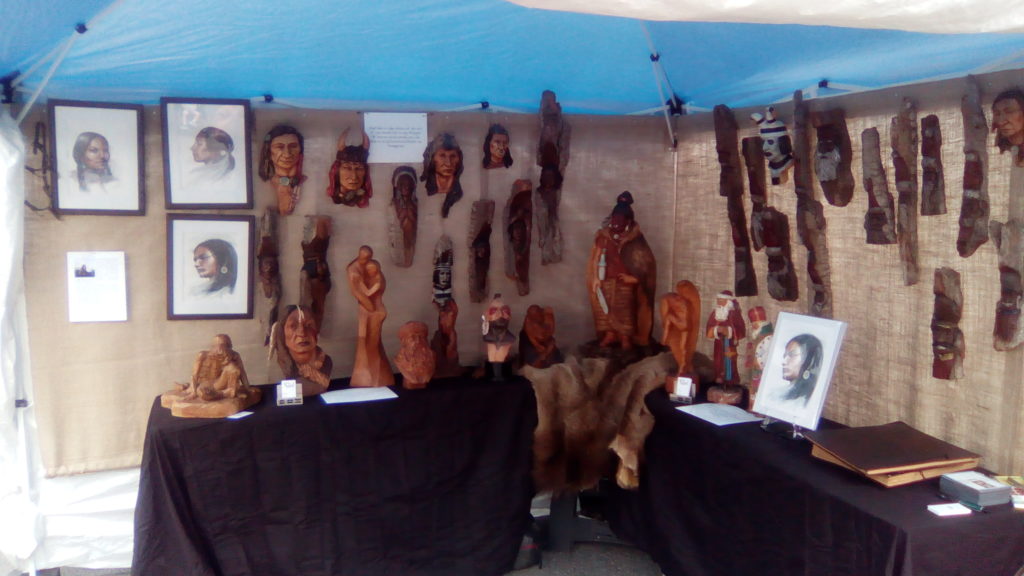
Featured in South Sound Magazine
South Sound Magazine published an article in their “Best of the South Sound” issue about the Hebrews 11 commission I recently finished. I got a copy of the magazine at Fred Meyer. The May/June issue is available till June 30th.
Featured in Northwest Prime Time Magazine
Northwest Prime Time Magazine published an article about the Hebrews 11 commission that I recently finished. You can read the article here.
Visual Art in the Protestant Church
Calvin and many of the second wave of reformers, after Luther were dead set against visual art in churches. One only needs to read the creation of the tabernacle and the temple to know that God’s house should be more than a tent from K-mart or a box with benches from IKEA. While the Catholic church was sponsoring some of the greatest art ever produced the Protestant churches were white washing the walls. Calvin saw the propensity of men in his day to turn those images into idols and I understand why he took the position he did. But taking the extreme position he did is still felt today, and lost is a great tool for evangelizing, teaching and reflecting on God’s glory.
Even though there was a deliberate movement by the Catholic church to create more grand art to entice people to come to the catholic church, everything was not rosy . Federico Borromeo (archbishop of Milan) wrote of Michelangelo’s Last Judgment (many years after it was completed) “Some artist so display the bending and joining of individual parts and limbs of the body, that it seems they would sooner exhibit anatomical illustrations for the treatment of wounds than incite devotion.”
Most Protestant churches are C&E Art churches in the USA. What is a C&E Art church? The felt art depicting the birth of Christ comes out at Christmas (C) and the felt art depicting the Passion of Christ comes out at Easter (E). Why not have these two most important stories made a permanent part of a sanctuary? I believe when done correctly three things will happen
Evangelism
The Sistine chapel is visited by 25,000 people daily, plus the painting s are available to view in countless books and on countless web sites. Many of you who will read this have been there and I am sure that almost all have seen pictures in books and on the web.
A question for those of you that have seen the Last Judgement in person. Did you have a priest, monk, nun or even a lay christian ask you, as you were looking at the fresco, “Where do you see yourself in the Last Judgement?” Going to Heaven or going to Hell, why?
25,000 Opportunities Lost.
It is unusual to see art in churches even the most unartistic person still appreciates art, people are visual, people ask questions, have the answers it has already happened to me numerous times with the narthex art and many of those times they have not even seen the carvings.
Teaching
Children are visual they will ask questions. One of the reason that my two sons know the Bible so well is because of the Action Bible. It is illustrated like a graphic comic book and it is very in depth with the content. We would read that bible 5 or 6 time a year. They are listening and looking at the pictures and associating the two together. With the art in the narthex I have heard mothers explaining to their children who each of the people are that are depicted in the carvings.
Devotion
Being the artist I have been involved in this more than anyone else, my faith was challenged as read Hebrew 11 and the reference passages over and over. Do I really believe these stories? Yes I do. I have a much deeper understanding of what happened on that mountain with Abraham and Isaac. I marvel at the faith of Rahab, who is a great grandmother of Jesus Christ. Samson a man who had it all but continually messed things up. Naboth who stood for what was right and was killed for it. I watch you the congregation looking at the carvings I have heard you explain to a friend or child what each one is, powerful images help make the stories concrete and real.
Progress – Lessons learned
Abraham and Isaac being the last of seven pieces I have learned a lot about doing a large project. In the picture you will see the fifth layer of wood being glued on to the block. I am using the minimal amount of wood possible. For two reasons Mahogany has gotten expensive and there is less wood to remove to finish the carving.
When I did Samson it was pretty much one big block of wood that was a glue up of a few dozen boards. Samson weighed 300 pounds before it was carved and around 120 pounds when it was finished. Abraham and Isaac was around 150 before and will be under 100 pounds when finished.
Progress – Tools of the trade
Before I get down to business with a mallet and my chisels this is what I used on Abraham and Isaac: Shopbot CNC, Titebond II glue, my trusty Porter Cable drill and Irwin, Miro-Moose Hand Screw and Rockler pipe clamps.
The CNC is helpful in removing a lot of wood quickly with minimal involvement on my part. Would Michelangelo use such a device or is it cheating? I will write a blog post on that soon.
The glue is a water resistant wood glue that works great. These will never reside outside but better safe than sorry.
Three types of clamps with three purposes. The Irwin clamps are great for positioning the pieces being glued. The wood will slide a lot when initial clamp pressure is applied. The Irwin clamps are easy to use one handed and easy to adjust as needed. The pipe clamps work great for applying a ton of pressure on the glue joint. The hand screw clamps can apply a great deal of pressure too but they really shine in having a deep throat and being able to clamp at odd angles.
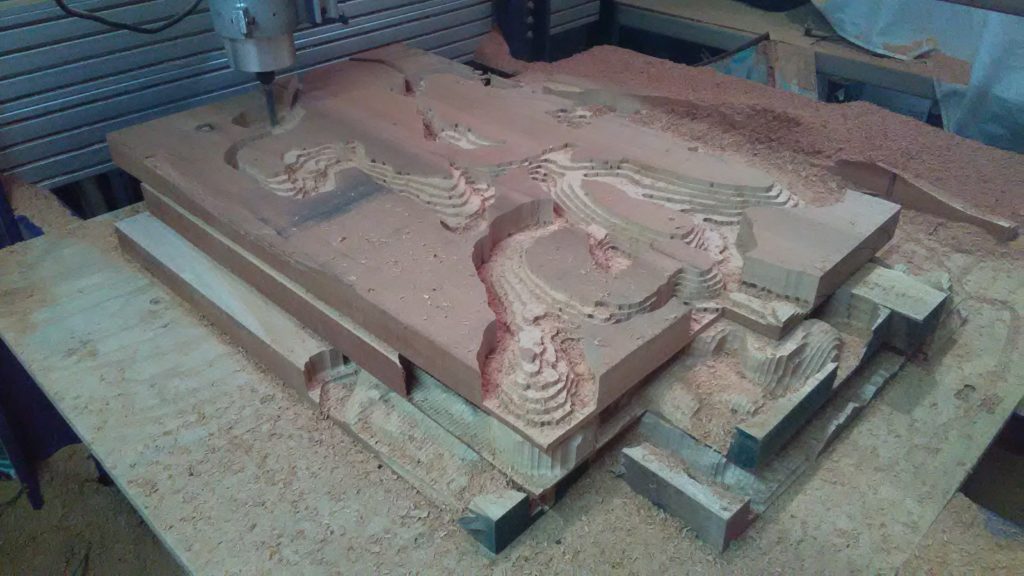
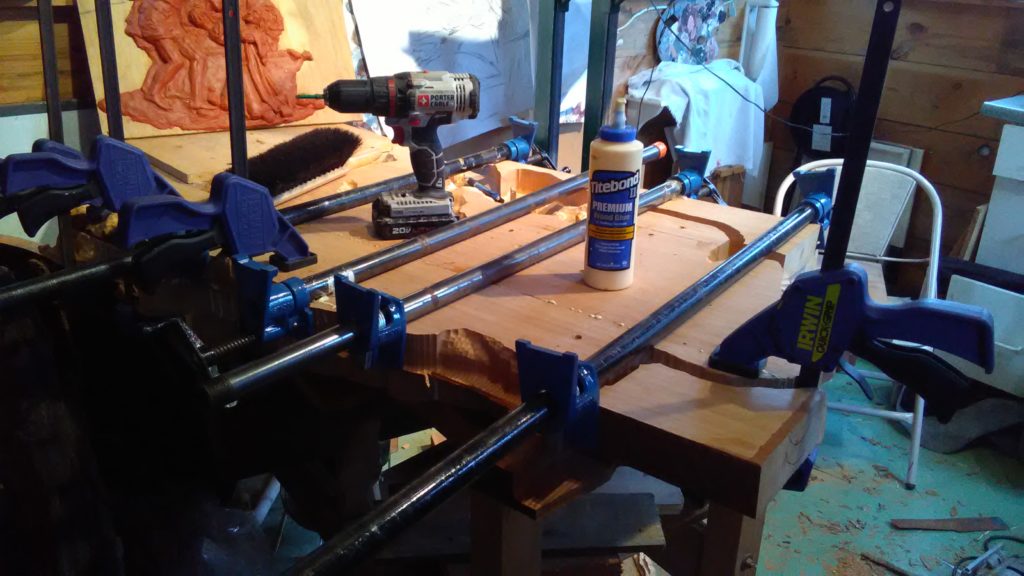
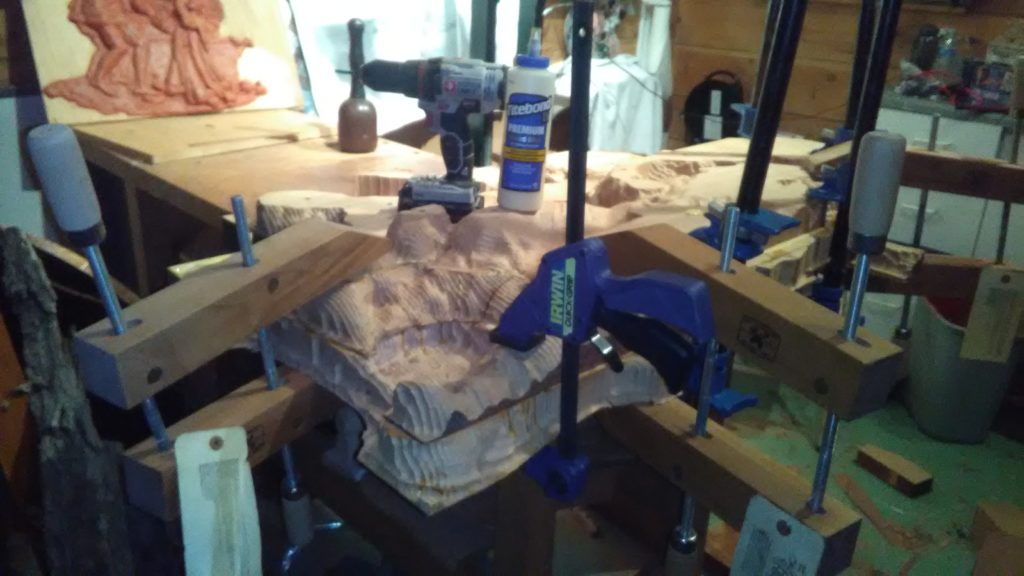
Progress – The search for wood
[catlist id=”18-19-1-20″]
This is what Abraham and Isaac look like at the start. Not very exciting or sexy but one of the most important parts of a project, selecting the wood. I need to go through up to 1000 board feet of wood to find the 70 to 100 board feet I need for each carving. The grain, color, density, width, thickness, moisture content; they are all important in the selecting wood that will carve well. It is getting harder to find good mahogany for carving since Honduras restricted exportation a decade ago after a few bad eggs were harvesting trees that they shouldn’t have.
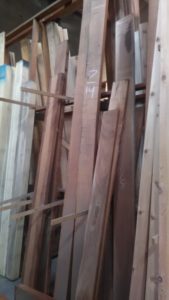

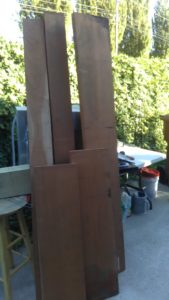
Progress – Abraham and Isaac
[catlist id=”18-19-1-20″]The last piece to complete the Hebrew 11 series. I have chosen the story of the sacrifice of Isaac in Genesis 22 to represent Abraham. This story is an allegorical representation of the Passion of Christ.
I love the woodcut pictured below. It is very intimate but does not lend itself well to being created in a large relief carving. The angels wings would be to wide and bulky for the space that the sculpture will live. I have my ideas on how to keep the tension and intimacy of this woodcut but make the sculpture more compact.
